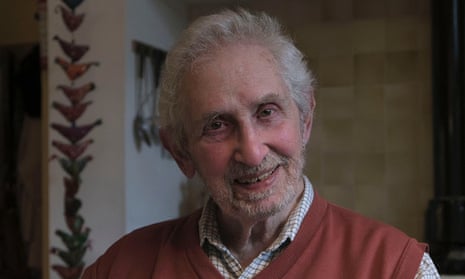My friend Stephen Marks, who has died aged 88, was an architect with a great interest in the history of the subject. As a planning inspector, he was keen to conserve the best of the past, while encouraging sensitive new development.
In 1984, he oversaw the controversial public inquiry into the plans for an office block, Mansion House Square, in the City of London, the last design of the architect Mies van Der Rohe. This was a time of regression from the values of the modern movement. That year the Prince of Wales made a speech at the 150th anniversary celebration of the Royal Institute of British Architects at Hampton Court, in which he called the Mies design a “giant glass stump”.
Stephen’s recommendation for refusal for the design was upheld by the secretary of state. James Stirling was appointed to design an alternative and the result, No 1 Poultry, an example of postmodernism at its most flamboyant, is now listed.
Stephen was born in London. He had strong links to the conservation movement through his maternal grandfather, the architect Albert Powys, a former secretary to the Society for the Protection of Ancient Buildings. Stephen’s father, Herbert Marks, unusually for a City accountant, was a perceptive art collector who knew artists including Jacob Epstein and Henry Moore. Herbert may have met Stephen’s mother, Isobel Powys, through Clough Williams-Ellis (of Portmeirion fame), in whose office Isobel was a trainee architect.
After school at Clifton college, in Bristol, and a classics degree at Queen’s College, Oxford, Stephen trained at the Bartlett School of Architecture at University College London, headed by the classicist Hector Corfiato, whose teaching was based on the Beaux Arts model. My impression was that Stephen struggled to cast off the rigidity of this training.
It may have been because of his historical enthusiasms, shown in his work for the London Topographical Society and the Camberwell Society, that Stephen was selected to be deputy chief conservation officer for Westminster in 1968 from a shortlist of apparently better qualified applicants. With the new powers granted in the 1967 Civic Amenities Act, the Westminster team oversaw the formation of many large conservation areas, and increased the number of listed buildings in the borough, with Stephen writing most of the reports.
Stephen had married Tordis Knees, an au pair, in 1959 and they had two children, Edward and Dorothy. The family moved in 1978 to Kilmersdon, in Somerset, where Stephen was instrumental in the creation of the lottery-funded Radstock and North Somerset Coalfield Heritage Museum. He adapted to country living to become an enthusiast for the tree-planting in the hedgerows around the village, persuading farmers, when trimming their hedges, to avoid lopping the saplings.
Tordis died in 2019. Stephen is survived by Edward and Dorothy, and by his sister, Antonia, and half-sister, Anna.
